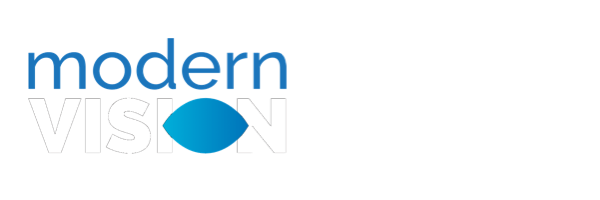Refractive Lens Exchange Healing & Brain Adaptation: Why Your Brain Needs Time
Published by on September 9, 2025
Refractive Lens Exchange (RLE), also called Custom Lens Replacement, is an exciting opportunity to enjoy clearer, sharper vision—often without the need for glasses or contacts. While the physical healing process is typically smooth, it’s helpful to know that your brain also goes through a brief adjustment period as it adapts to your new visual experience. At Kugler Vision, we guide you through every step of this journey so you can feel confident and informed. In this article, we’ll explain why this brain adaptation phase is normal and what to expect as your vision settles. If you’re considering RLE, schedule a personal EyeAnalysis consultation with Kugler Vision to learn more.
What happens right after Refractive Lens Exchange surgery?
In the first 24 to 48 hours after Refractive Lens Exchange (RLE), most patients begin to notice a significant improvement in their vision. This quick boost in clarity is encouraging, but some mild blurriness may still occur due to eye drop use, dilation, or the natural response of your eye to the procedure. During this early stage, your eye begins the physical healing process, while your brain is introduced to a whole new pattern of visual information.
By the end of the first week, many patients resume everyday life activities. However, you should still avoid heavy lifting, swimming, or exposing the eye to dust or debris. Your Kugler Vision surgeon will monitor your progress closely to ensure the intraocular lens is stable and functioning as expected. Full physical healing generally wraps up within 4 to 6 weeks, but the story doesn’t end there—your brain is still working behind the scenes.
Why does your brain need time to adjust to your new lens?
Your brain needs time to adjust to the new intraocular lens because it must relearn how to interpret visual information that is now clearer, sharper, and often more complex than before. This process, known as neuroadaptation, is especially important after vision correction procedures like RLE or clear lens extraction.
If you’ve lived with myopia, astigmatism, presbyopia, or even cataracts for years, your brain developed strategies to make sense of the blurry or distorted images it received. Once your new corrective lens is implanted, the brain must shift gears, adapting to the increased detail, contrast, and light sensitivity. For many patients—especially those with multifocal or extended depth of focus lenses—this shift includes learning how to focus properly at different distances. For example, if you previously wore a progressive lens, your brain was trained to shift focus between zones of correction—adjusting to a new implanted lens requires a similar learning process. This is where perception, not just physical healing, plays a big role in overall satisfaction.
 What neurological changes take place during the healing process?
What neurological changes take place during the healing process?
During recovery, the brain begins to rewire how it processes light and visual input. These changes occur in the visual cortex and other regions of the brain responsible for interpreting color, depth, brightness, and contrast. Imaging studies in ophthalmology have shown that successful lens replacement can actually lead to structural changes in brain areas tied to visual acuity and recognition skills.
This neural reorganization helps improve not only vision but also related cognitive functions. Patients sometimes report better mental clarity or even a refreshed sense of awareness as their brain and eyes begin working together again. This underscores how lens surgery is more than just a physical change—it also enhances visual perception and how the brain processes vision in everyday life.
How long does brain adaptation take after lens replacement?
Neuroadaptation generally takes between 3 to 6 months following lens replacement surgery. While many people report noticeable improvement within the first few days or weeks, full adaptation takes time. This is especially true for patients who receive advanced lens implants like multifocal or accommodating lenses, which require more complex processing by the brain.
During this time, it’s normal to experience visual phenomena such as glare, halos, or minor issues with depth perception. These signs and symptoms usually fade as the brain gets better at filtering and interpreting new signals. It’s important to stay patient and keep in touch with your Kugler Vision care team to track progress and optimize your result.
Can visual or mental exercises help speed up brain adaptation?
Yes, visual exercises can help your brain adapt more quickly to your new lenses. Activities like reading at different distances, focusing on objects near and far, or even enjoying hobbies like photography or painting can all stimulate neuroplasticity. These tasks challenge your brain’s visual processing centers and reinforce new neural pathways.
Even playing brain games or watching television with an intentional focus on detail can help. For some patients, especially those with lingering visual impairment or slow progress, customized vision therapy under the guidance of an optometry professional may improve outcomes. Just be sure to follow your surgeon’s instructions before starting new activities during recovery.
Why is brain adaptation essential to your long-term visual success?
Adaptation is critical because even with a perfectly placed lens, your visual experience depends on how well your brain can process the images your eyes deliver. Neuroadaptation is the bridge between physical surgery and restored vision that feels natural and seamless in your daily life.
Whether you’re driving, working at a computer, or spending time on leisure activities with your family, the skills your brain relearns after surgery—like focusing, tracking, and distinguishing light and color—are essential for success. This is where personalization of care at Kugler Vision makes a difference. We understand that each individual patient’s experience is unique, and we tailor the process to support you through this important phase of healing and learning.
Ready to See the Difference? Let Your Brain Catch Up
Your eyes may heal fast, but your brain needs a bit more time to catch up—and that’s completely normal. With the advanced technology and refractive surgery expertise available at Kugler Vision, you’ll be supported through every phase of your recovery, from your initial evaluation to the final stages of neuroadaptation. Whether you’re looking to reduce dependence on glasses, eliminate contact lens discomfort, or move beyond the effects of cataract surgery, the team at Kugler Vision is here to help you reach your vision goals.
We combine advanced tools with a deep understanding of both eye and brain adaptation to guide you toward lasting results.
Schedule your consultation today and find out if you’re a candidate for Refractive Lens Exchange.

Lance Kugler, MD, is a specialist in LASIK and vision correction surgery and CEO of Kugler Vision. A proud Omaha native, he is passionate about improving lives through clear vision. Dr. Kugler serves on several national boards, and his practice is recognized internationally as a center of excellence. Dr. Kugler is one of the original founders of the Refractive Surgery Alliance, an international organization comprised of over 350 of the world’s leading vision correction surgeons; he also served as its first president. In 2019, Dr. Kugler was selected as a TEDx speaker, and delivered a talk in Omaha about the worldwide epidemic of nearsightedness and refractive solutions. Dr. Kugler is an Associate Professor of Refractive Surgery at the University of Nebraska Medical Center’s Truhlsen Eye Institute, has been published in many medical journals, and participates in numerous clinical studies to advance the field of vision correction surgery. Additionally, Dr. Kugler is proud to be a Board Certified Fellow of the World College of Refractive Surgery & Visual Sciences. Dr. Kugler and his wife are proud parents to five active kids. When he has a spare moment, he enjoys skiing, tennis, travel, and fine coffee.




Leave a Reply